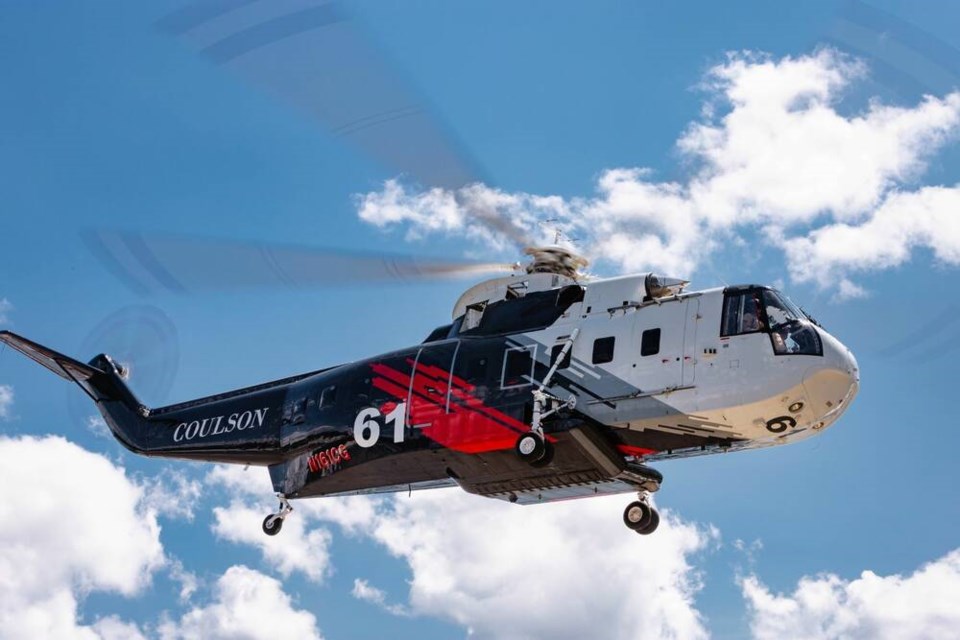The Port Alberni-based company has signed a 70-day contract with the B.C. Wildfire Service to provide one of its Sikorsky S-61 Type 1 helitankers that are equipped for night-time operations.

Coulson Aviation is joining the firefight in B.C.’s forests, bringing its night-vision technology to battle wildfires.
The Port Alberni-based company, whose pilots use night-vision goggles to battle fires in Australia and the United States, has signed a 70-day contract with the B.C. Wildfire Service to provide one of its Sikorsky S-61 Type 1 helitankers that are equipped for night-time operations.
The deal marks the first time Coulson will conduct night-vision aerial firefighting missions on Canadian soil.
Britt Coulson, president and chief operating officer of Coulson Aviation Canada, said the night-vision-equipped S-61 helitanker is capable of delivering precise water drops in low-light conditions, extending operational effectiveness beyond traditional daylight limits.
Coulson Aviation Canada has logged thousands of night-vision flight hours and dropped tens of millions of gallons at night on urban wildfires in California and through parts of Australia.
The company earned the world’s first night-vision firefighting certification from Transport Canada in 2011, followed by the first approvals in Australia and the United States.
Coulson’s contracts include the Quick Reaction Force program, operated year-round in southern California in partnership with the Orange County Fire Authority, the L.A. County Fire Department and the Ventura County Fire Department.
Coulson says on its website there are benefits to aerial firefighting missions during the night, when temperatures drop and humidity may rise, making water and retardant drops more potent.
There are also fewer aircraft in the skies, it said, making it safer for operations.
Coulson Aviation employs a two-aircraft team, including a Sikorsky S-61 firefighting helicopter and a Sikorsky S-76 supervision helicopter.
Using night-vision technology and a high-powered laser pointer, operators can pinpoint the ideal drop zone for the firefighting helicopter, it said.
The company said that with thermal imaging technology, the supervision aircraft can often spot a fire’s movement, which is often hard to see during daylight hours.
[email protected]